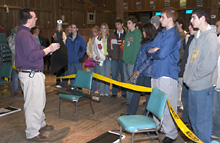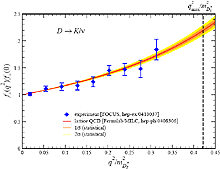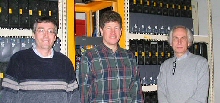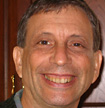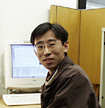 | Wednesday, August 10, 2005 |
|
Wednesday, August 10 9:30 a.m. Special Seminar - 1 West Speaker: M. Hanneman, Senior Counterintelligence Officer, Richland Title: Terrorism 101: The Threat We Face 9:30 a.m. Fermilab ILC R&D Meeting - Curia II Title: ILC Detector and Physics Groups' Plans for ALCPG Snowmass Workshop 11:00 a.m. Fermilab ILC R&D/Research Techniques Seminar - Curia II Speaker: S. Worm, Rutherford Appleton Laboratory Title: LCFI: Pixels for the ILC 3:30 p.m. Director's Coffee Break - 2nd Flr X-Over 4:00 p.m. Fermilab Colloquium - 1 West Speaker: R. Mitchell, Jet Propulsion Laboratory Title: The Cassini/Huygens Mission to Saturn
Thursday, August 11 |
|
Extended Forecast |
Secon Level 3 |
|
Wednesday, August 10 Portabello Harvest Grain Soup Santa Fe Chicken Quesadilla $4.85 Garlic Herb Roasted Pork $3.75 Beef Stroganoff $3.75 Maryland Crab Salad $4.75 Meatlover's Pizza $3.00 Pesto Shrimp Linguini w/Leeks & Tomatoes $4.85 The Wilson Hall Cafe now accepts Visa, Master Card, Discover and American Express at Cash Register #1. |
|
Wednesday, August 10 Lunch Thai Beef & Vegetable Salad Banana Bourbon Cake w/Cream Anglais
Thursday, August 11
Chez Leon Menu |
| Fermilab Today is online at: http://www.fnal.gov/today/ Send comments and suggestions to today@fnal.gov Fermilab Today archive Fermilab Today PDF Version Fermilab Result of the Week archive Fermilab Safety Tip of the Week archive Linear Collider News archive Fermilab Today classifieds Subscribe/Unsubscribe to |
|
Education Office Teaches Physics to Local Students | ||
| ||
|
Fermilab's Education Office greets the new school year with another complete program of classroom presentations to celebrate the World Year of Physics, marking the 100th anniversary of Albert Einstein's "Miraculous Year."
"We reach many students throughout the area with our presentations each year," said Susan Dahl of Fermilab's Education Office, "but we're hoping to reach even more as a way of celebrating the year in which Einstein published the four papers that forever changed the way we view our world." The age-appropriate World Year of Physics presentations, taught by Fermilab scientists and geared toward students from grades 2 through 12, are brought free of charge to classrooms, libraries and after-school programs, or to other informal science activities. From "Zap! Light and Color" (Grades 2-6) to "Space, Time and Einstein" (Grades 7-12), the presentations and presenters have made lasting impressions throughout Fermilab's surrounding school communities.
"I was very pleased with Fermilab's World Year of Physics presentations," said Anne Barney of St. Peter's school in Geneva, Illinois. "The presenters were very knowledgeable, well-prepared, and entertaining. The presentations, perfectly geared toward the student's grade level, consisted of discussions, visual aids, and hands-on activities. The Fermilab WYoP presentations also introduced to the children a variety of careers in science."
—Mike Perricone |
|
From The AIP Bulletin of Science Policy News, August 8, 2005 President Bush Signs Energy Policy Legislation; Director of the Office of Science elevated to Under Secretary for Science President George Bush today signed H.R. 6, The Energy Policy Act of 2005. Among the provisions of this 1,725 page bill are provisions providing spending caps for the Department of Energy's Office of Science for Fiscal Years 2007, 2008 and 2009. The conference report, 109-190, elevates the position of the director of the Office of Science, and contains language regarding several physics programs (fusion, Spallation Neutron Source, and Rare Isotope Accelerator) within the Office of Science. Passage by the House and Senate and President Bush's signature on this Act puts two branches of the federal government on record in support of dramatically higher funding for the Office of Science. Whether these authorization level are reflected in future appropriations bills is yet to be seen. It will be difficult in the current fiscal environment to provide this funding for the Office of Science, as evidenced by the significant differences in the budget for the National Science Foundation and the levels authorized in the National Science Foundation Authorization Act.
|
|
Lattice QCD Calculations Agree with Experiments | ||
| ||
|
One of the highlights of last month's Lepton-Photon conference in Uppsala, Sweden, was a challenge set by the CLEO-c experiment to those who believe they can carry out realistic quantum chromodynamics calculations. Last year, CLEO-c announced a measurement of the D meson's decay constant, abbreviated ƒD. The data sample consisted of only eight events, however, leading to a rather large uncertainty of 20%. With further running, the plan was to increase the number of detected events and halve the uncertainty.
The D meson is a bound state of a charmed quark and an up antiquark. The decay constant is a basic property of any meson, and, in principle, it follows from the laws of quantum chromodynamics (QCD). In the idealization of a meson as a quark—antiquark pair, it is essentially the meson's wave function, evaluated at zero separation of quark and antiquark. A real meson is more complicated: the quark and antiquark are bound by a swarm of gluons, and, if that is not enough, the gluons occasionally fluctuate into pairs of more quarks and antiquarks. It is, thus, not easy for theorists to calculate decay constants from QCD.
|
|
Wilson Hall Interior Window Washing The cleaning crew will wash the interior windows on the 8th, 9th, 10th and 11th floors of Wilson Hall today. Contact Enixe Castro (x2798) with questions.
International Folk Dancing
Bowling League |
